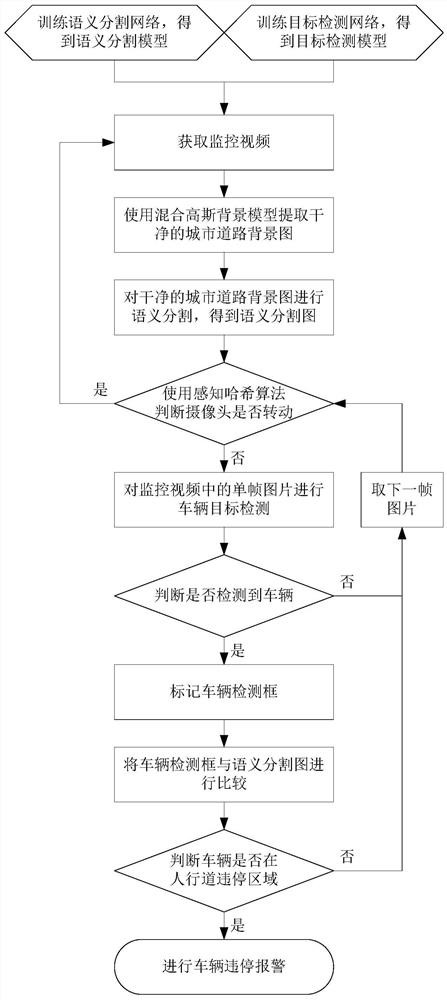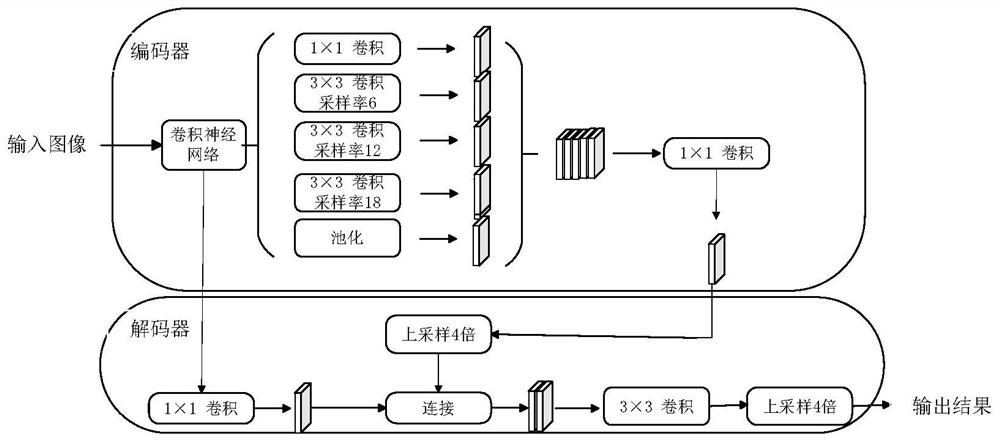A vehicle parking violation detection method based on object detection and semantic segmentation
A semantic segmentation and target detection technology, applied in the field of deep learning and computer vision, can solve problems such as poor real-time performance, high misjudgment rate, and inapplicability to rotating cameras, etc., to solve the problem of segmented area failure, good real-time performance, and improved The effect of judgment accuracy
- Summary
- Abstract
- Description
- Claims
- Application Information
AI Technical Summary
Problems solved by technology
Method used
Image
Examples
Embodiment 1
[0052] A preferred embodiment of the present invention provides a method for detecting illegal parking on the sidewalk based on target detection and semantic segmentation, comprising the following steps:
[0053] First, the training stage:
[0054] Step 1: Collect surveillance photos of surveillance cameras in different scenarios, and perform semantic segmentation annotation to obtain a semantic segmentation data set, train a semantic segmentation network with the semantic segmentation data set, and obtain a semantic segmentation model;
[0055] Specifically, in this embodiment, 533 surveillance photos of Skynet cameras are selected and divided into a training set and a test set. The training set is used for the training of semantic segmentation, the test set is used to verify the effect of semantic segmentation, and then the annotation of semantic segmentation is performed. , specifically to label the semantic segmentation training set as two categories: sidewalk (sidewalk) a...
PUM
 Login to View More
Login to View More Abstract
Description
Claims
Application Information
 Login to View More
Login to View More - R&D
- Intellectual Property
- Life Sciences
- Materials
- Tech Scout
- Unparalleled Data Quality
- Higher Quality Content
- 60% Fewer Hallucinations
Browse by: Latest US Patents, China's latest patents, Technical Efficacy Thesaurus, Application Domain, Technology Topic, Popular Technical Reports.
© 2025 PatSnap. All rights reserved.Legal|Privacy policy|Modern Slavery Act Transparency Statement|Sitemap|About US| Contact US: help@patsnap.com



